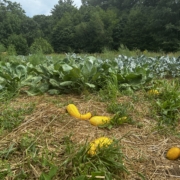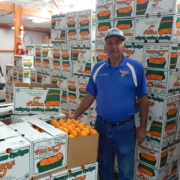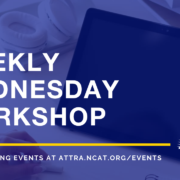The Quest for Montana Food Self-Reliance—What Will It Take?
 Print This Post
Print This Post
By Tammy Howard, NCAT Agriculture Specialist
I recently attended a summit session convened by NCAT’s Montana partners at Alternative Energy Resources Organization to discuss a collective strategy to increase Montana’s food self-reliance. The backdrop of this gathering was a report titled A Regional Approach to Food System Resilience, the result of recent efforts in New England to increase regional food production.
The Montana summit used this report as the foundation to develop a similar strategy for “Montana feeding Montanans.” Representatives from most sectors of the food system explored questions about rebuilding Montana’s food self-reliance. The collective goal of meeting Montana’s food needs with 33% regionally produced food by 2033 is an ambitious but important goal for the agriculture and food systems community to rally behind. There was broad representation across the food system, including the Montana Department of Agriculture, agriculture nonprofits, Farm to School, university and Extension staff, farmers and ranchers, and food retail establishments.
The New England Food Systems Planners Partnership
The original effort in New England is an ongoing collaborative partnership among state-level food systems organizations that aims to answer this key question:- “What it would take to meet 30% of New England’s Food Consumption in 2030?”
- Their convenings and state-based efforts led to the report, which focuses on five key questions related to New England’s food supply: What might change if we invest in strengthening our regional food system?
- If we ate healthier, could more of our food be supplied by regional production?
- Could New England’s six states meet a goal of supplying 30% of the region’s food by 2030?
- Do we have the right mix of industries to ramp up food production?
- What market channels offer the best opportunities for sourcing regional and local products?
These questions were informed by topic teams that collected data and provided the analysis and overall framework in the report.
Common Challenges That Every Food System Faces
The New England report outlines in detail some common challenges that every food system faces. Those challenges included: risks to long-term food production; challenges to farm, fishery, and food business viability; rising inequality and stagnant wages; and limited progress on reducing food insecurity. Having lived and worked in the Montana food system arena for almost 20 years, I would agree with many of these ubiquitous challenges, but I also recognize that Montana’s climate and rural nature present unique challenges. The participants at the Montana Feeding Montanans summit identified some of those unique challenges, which included distance to regional markets, difficulties of frontier communities to get reliable delivery of local food products, and farmer capacity to scale up for regional markets. In Montana, many small farmers who grow and sell produce for local markets exist in the state’s more urban areas, and rural area farms tend to be larger commodity farms growing grains and beef for export.
Where Are We and What is Next for Montana’s Food Self-reliance Movement?
In 2007, the Grow Montana Food Policy Coalition reported that “in 1950, 70% of the food Montanans ate was grown in Montana.” At the time of the report, the number was down to 10%. That drop galvanized a commitment over the next 15 years on the part of organizations, state agencies, and businesses to address the challenges and enable Montana’s food producers to meet more of the state’s food needs. Through efforts in farm to school, farmers markets, value-added processing, and the development of Montana regional food and agriculture development centers, we have made some progress towards that goal, yet according to the 2022 report Economic Value and Impact of Local Food in Montana, commissioned by Grow Montana, today “local food represents 3% of the total food consumed in the state of Montana.”
The group is in the beginning stages of development and will continue to meet to identify existing hard data and analysis of Montana local food consumption, existing distribution networks, processing capacity, and gaps that need to be addressed. For those interested in contributing to your own state’s food self-reliance, ATTRA has many tools and resources to help farmers and food system advocates to contribute to this equation. See the resources below.
Related ATTRA Resources:
Scaling Up for Regional Markets Tutorial
Scaling Up your Vegetable Farm for Regional Markets
Topic Area: Local Food Systems
This blog is produced by the National Center for Appropriate Technology through the ATTRA Sustainable Agriculture program, under a cooperative agreement with USDA Rural Development. ATTRA.NCAT.ORG.






 USDA by Kirsten Strough
USDA by Kirsten Strough


 USDA Photo by Lance Cheung.
USDA Photo by Lance Cheung.
